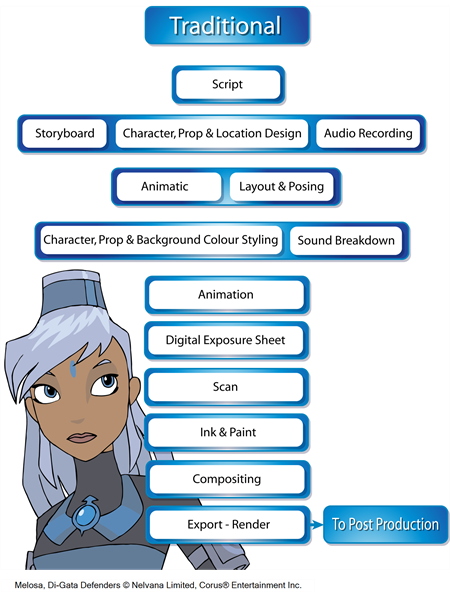
For The Doll, Toon Boom partnered with D’ART Shtajio for training, production assistance, and the creation of special custom scripts that would allow Harmony to digitally replicate the Japanese process. In order to meet the needs of Japanese studios, Western digital 2d animation solutions must emulate and empower this unique paper and pencil pipeline instead of trying to erase it.

“I didn’t know if that would work digitally, but we have recreated the process in Harmony.” “Japanese animators have a system for passing the papers around the room and getting everything checked by the right person before moving to the next phase,” says Thurlow. The founders of the studio D’ART Shtajio are Toon Boom converts after using it on the production of “The Doll.” D’ART Shtajio needed an affordable digital solution that could reflect the quality of the paper and pencil work they were doing, while respecting the Japanese process – and culture – they did it in. They both knew Toon Boom Harmony as the industry-standard 2d animation software in North America and were well aware that OLM in Japan used it for Pokémon, but they wanted to see its benefits for themselves. “In five to ten years, everybody will be digital.” “The future is digital in Japan there’s no avoiding the situation,” says Thurlow. Sensing a change in the industry, the pair began looking into the digital animation software that others in Japan were using. He and his right-hand man, animation director Henry Thurlow, both use the traditional Japanese process to create anime. D’ART Shtajio was founded in 2016 by Isom, an American background artist who moved to Japan 12 years ago.


 0 kommentar(er)
0 kommentar(er)
